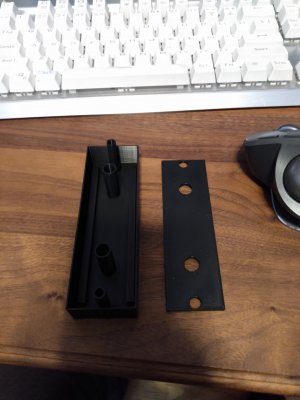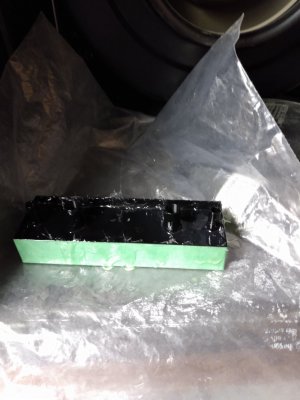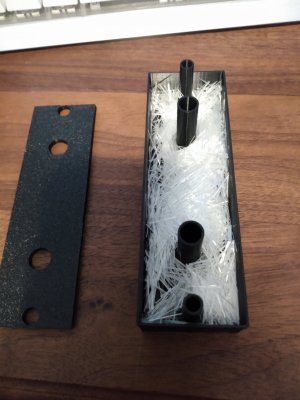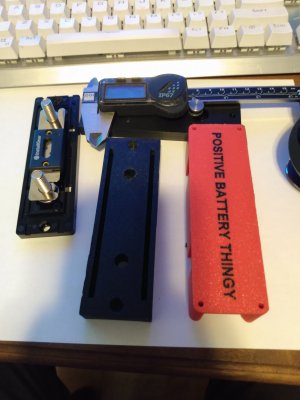Hi everyone
Here's a simple project I had, and what it's become.
Long story short: I wanted coffee and needed a 200 amp fused busbar/distribution box.
I bought one and quickly realized it was flimsy.
The potential for damage with a #1 electrical cable flying around in a trunk is big, and I like reinventing the wheel once in a while. So I made my own.
Fusion is at version 19 of that project, and I have a few prototype out, but I think I'm slowly creeping onto something.
I made a shell, which had all of the critical features of my part, and a cover that could slide in from the back. Proceeded to fill with chopped fiberglass and polyester resin, and here we have a very heavy duty part, with all the features that need to be, while using playdough level skills.
Let me share a few lessons I've learnt throughout this process.
-Polyester resin create an exothermic reaction hot enough to warp PLA.
-Polyester resin does not stick well to PLA.
-Laminating fabric inside a complex mold with a bunch of small corners is wishful at best. It does good on large surfaces
-Filling that shell with fibers and pouring resin is also a bad idea.
what worked:
-Making the shell longer than necessary
-long single fiber stands laid at critical location seem to do well.
-Mixing resin and chopped fiber, and use the mixture to fill the shell, then press out the excess.
-The shell needs to be double the height, because that's how much it will compress.
-Using a cap to compress all of that fiber once the mold is filled works fantastic if it has a gap or a few holes.
-Tape the surfaces of the shell to keep it clean. Resin gets everywhere.
It may be worth trying epoxy, for the smell and the heat. The work time is also longer.
Since polyester resin doesn't stick good to PLA, maybe a multi-part mold could be an option.
I am unsure where this can be used other than this very specific application, perhaps someone will make something with this, one day.
edit: few typos corrected.
Here's a simple project I had, and what it's become.
Long story short: I wanted coffee and needed a 200 amp fused busbar/distribution box.
I bought one and quickly realized it was flimsy.
The potential for damage with a #1 electrical cable flying around in a trunk is big, and I like reinventing the wheel once in a while. So I made my own.
Fusion is at version 19 of that project, and I have a few prototype out, but I think I'm slowly creeping onto something.
I made a shell, which had all of the critical features of my part, and a cover that could slide in from the back. Proceeded to fill with chopped fiberglass and polyester resin, and here we have a very heavy duty part, with all the features that need to be, while using playdough level skills.
Let me share a few lessons I've learnt throughout this process.
-Polyester resin create an exothermic reaction hot enough to warp PLA.
-Polyester resin does not stick well to PLA.
-Laminating fabric inside a complex mold with a bunch of small corners is wishful at best. It does good on large surfaces
-Filling that shell with fibers and pouring resin is also a bad idea.
what worked:
-Making the shell longer than necessary
-long single fiber stands laid at critical location seem to do well.
-Mixing resin and chopped fiber, and use the mixture to fill the shell, then press out the excess.
-The shell needs to be double the height, because that's how much it will compress.
-Using a cap to compress all of that fiber once the mold is filled works fantastic if it has a gap or a few holes.
-Tape the surfaces of the shell to keep it clean. Resin gets everywhere.
It may be worth trying epoxy, for the smell and the heat. The work time is also longer.
Since polyester resin doesn't stick good to PLA, maybe a multi-part mold could be an option.
I am unsure where this can be used other than this very specific application, perhaps someone will make something with this, one day.
edit: few typos corrected.
Attachments
Last edited:







